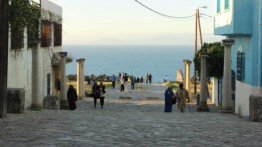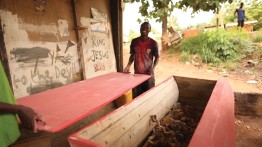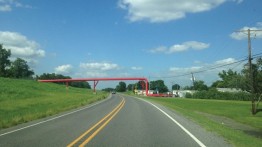The 2015 Menschel Exhibition
Tue, Feb 3, 12am - Sat, Feb 21, 2015 12am
This year’s Menschel Exhibition reflects the work of eleven Benjamin Menschel Fellows from the largest pool of proposals to date. The Benjamin Menschel Fellowship Program to Support Creative Inquiry was endowed by a grant given to The Cooper Union by the Horace W. Goldsmith Foundation in 1994 to support work in the fields of art, architecture, design and engineering. This generous grant was intended to provide funding to exceptional students who propose scholarly, independent projects that will in some way provide a culmination to their educational endeavors at The Cooper Union. Students compete for the award in the spring, work independently on their projects over the summer, often in far-flung places, and install an exhibition of their finalized projects in the first weeks of the new year.
Visitors to this year’s exhibition will be invited to travel imaginatively to different continents. Alyssa Davis, of the Albert Nerken School of Engineering, takes you to Ghana, for example, to encounter the work of craft persons who struggle in the contradictions of global trade. Another two projects consider the islands of the Caribbean. Sam Friedberg and Andrea Recalde of The Irwin S. Chanin School of Architecture explore the archeology of the ancient Tainos of Puerto Rico in search of the continuing traditions of agriculture and its symbolization. By jarring contrast, Maria Rodriguez-Jimenez of the School of Art and Pedro Galindo-Landeira, of the school of architecture explore the politics of “the fence,” separating Guantanamo from the rest of Cuba. Two more projects focus on the world of Spain and Morocco as they meet across a Strait—in their present turmoil of migration and refugees [Emmanuela Soria Ruiz & Pedram Sazesh of the School of Art], and in their quiet, beautiful legacy of architecture using the tile work called “zellij” [Maja Hjertén Knutson & Phong Kiwi Nguyen of the school of architecture.] Finally, Arta Perezic and Nicholas Pacula, two students of The Irwin S. Chanin School of Architecture tell the story of their travels down the Mississippi River recording the river’s industrialized fate. There are six installations in all.
Located in the Foundation Building, 5th, 6th and 7th Floors.
OPENING NIGHT RECEPTION: FEB. 3rd, 6-8 pm.
Free and open to the public
Tuesdays - Saturdays 11 A.M. - 7 P.M.
Located at 7 East 7th Street, between Third and Fourth Avenues







